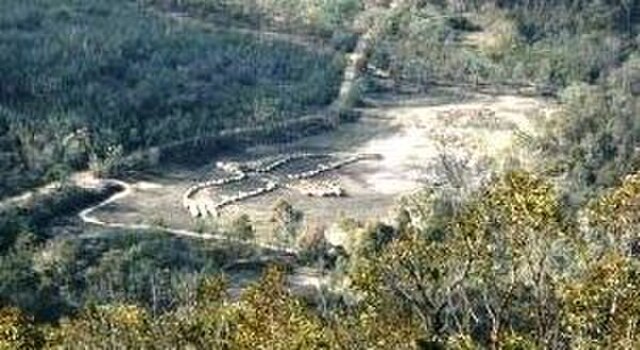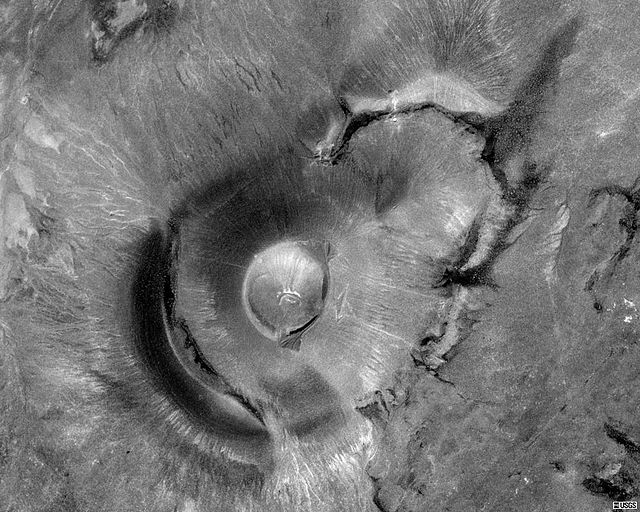Mel Chin is a conceptual visual artist. Motivated largely by political, cultural, and social circumstances, Chin works in a variety of art media to calculate meaning in modern life. Chin places art in landscapes, in public spaces, and in gallery and museum exhibitions, but his work is not limited to specific venues. Chin once stated: “Making objects and marks is also about making possibilities, making choices—and that is one of the last freedoms we have. To provide that is one of the functions of art.” His work may be found in the permanent collection of the National Gallery of Art in Washington, DC.
Mel Chin in 2023 speaking in Santa Fe, NM
See/Saw: The Earthworks, 1976
'The Manila Palm', sculpture by Mel Chin, Contemporary Arts Museum Houston, 1978
Degrees of Paradise, 1992
Land art, variously known as Earth art, environmental art, and Earthworks, is an art movement that emerged in the 1960s and 1970s, largely associated with Great Britain and the United States but that also includes examples from many countries. As a trend, "land art" expanded boundaries of art by the materials used and the siting of the works. The materials used were often the materials of the Earth, including the soil, rocks, vegetation, and water found on-site, and the sites of the works were often distant from population centers. Though sometimes fairly inaccessible, photo documentation was commonly brought back to the urban art gallery.
Time Landscape by Alan Sonfist, at LaGuardia and Houston Streets in Manhattan, 1965-present
Museum paper board left on the bank of the river for 4 days. By Jacek Tylicki, S.W. of Lund, Sweden, 473 X 354 mm. 1981
Bunjil, a geoglyph at the You Yangs, Lara, Australia, by Andrew Rogers. The creature has a wing span of 100 metres and 1500 tonnes of rock were used to construct it.
Satellite view of Roden Crater, the site of an Earthwork in progress by James Turrell, outside Flagstaff, Arizona








